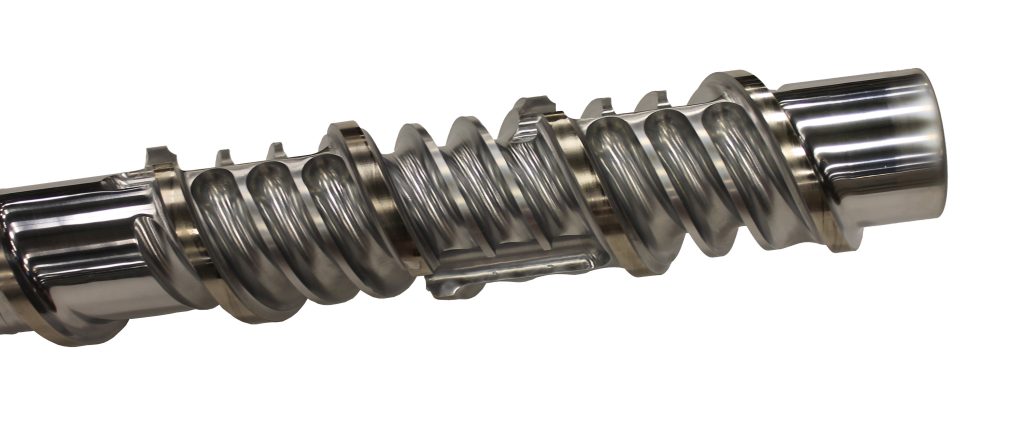Your feedscrew is stuck…now what? Never fear! First thing’s first, follow the instructions in your...
Essential Feedscrew and Barrel Maintenance Part I
Achieving processing goals, product quality and avoiding unexpected equipment shutdowns are critical for operational excellence and profitability. Ensuring the feedscrew and barrel remain in top condition is an essential part of this equation. In part one of this blog series, we will discuss feedscrew measurement.
Over time and under continuous operating conditions, the feedscrew and barrel will experience wear. The diameter of the feedscrew will decrease and the diameter of the barrel will increase as the screw wears. It’s important to maintain the clearance between the barrel and screw within tolerable limits to avoid processing issues.
The first step is to do an inspection and measure the feedscrew. You will need both cleaning tools and measuring tools to ensure accuracy of your measurements. All of the plastic solidified residue or build-up must be removed from the screw surface. Be careful not to damage the screw during cleaning. DO NOT USE A STEEL WIRE BRUSH OR AGGRESSIVE ABRASIVE MATERIAL. Use brass tools and copper gauze to avoid damaging the surface.
Required cleaning tools: Brass tools that will not damage the surface; copper gauze; others such as econ blast or dry ice
Required measuring tools: 1) OD bar mic to measure the outer diameter of the screw on the flights; and 2) Tape measure to reference the location along the length of the screw
Process: The following steps will ensure accurate measurement and documentation.
- Remove screw from extruder
- Clean screw using tools listed above
- Allow screw to cool to room temperature before conducting measurements
- Establish reference point on screw
- Number the flights along the screw
- Line up tape measure along length of screw and photograph each section showing the flight number and the tape measure
- Using the OD bar mic, measure the OD of each flight along the screw and record measurements in an excel sheet. See figure 1 below.
- Compare the wear on the screw to the original dimensions. Plot the flight number vs. screw OD on a spreadsheet for a visual comparison of the wear vs. the original dimensions. See figure 2 below.
Figure 1: This is a custom made micrometer for measuring the OD of extruder screws. The OD micrometer has been modified with a bar that can span across the flights of the screw that is being measured.
4-5 inch OD mic on a 4.5 inch screw

Figure 2:

The next step is to determine if the screw needs to be rebuilt or replaced. The chart below shows diametrical wear numbers for various screw diameters. These are guidelines and specific cases can vary. With a low number, you may notice a decrease in output at a given rpm. The medium number reveals the screw should be monitored closely with plans to rebuild or replace the screw in the near future. The high number indicates the screw should be rebuilt or replaced immediately. Note: Special high-work barrier screws limit wear to 75 percent of the barrier flight clearance.

In the next blog, we will talk about barrel measurement. Stay tuned and don’t forget to follow us on social media.
If you have any questions regarding feedscrew maintenance, e-mail marketing at marketing@davis-standard.com.


